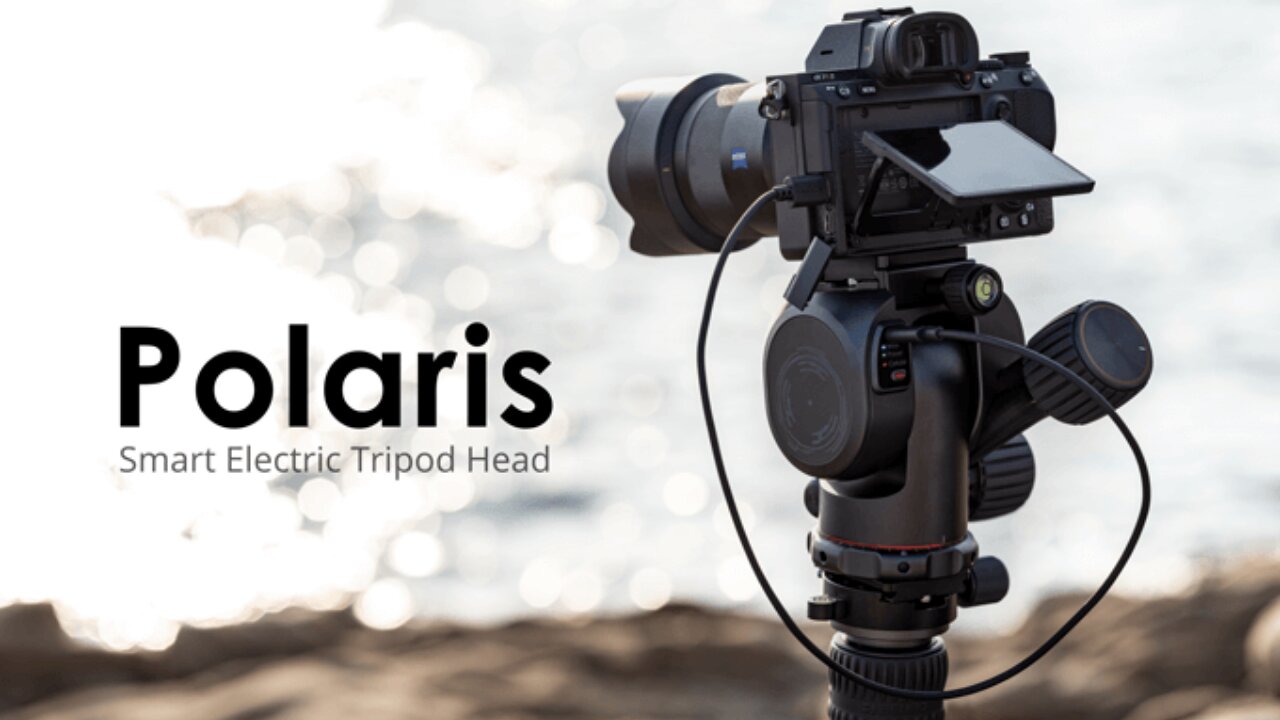Premium Only Content

Smart Electric Tripod Head - Polaris
#newtechnology #technology #tech #technologynews #technews #technologythesedays #innovation #newtech
*
- Polaris is a wireless, smart electric tripod head. What does that mean? Polaris helps photographers conveniently frame the perfect shooting angle with ease. If you are a lover of landscape and nature photography, or even astrophotography - Polaris can make your shooting efficient and uncomplicated. In addition, Polaris can automatically render photos that normally required computer processing, such as panoramic photos, time-lapses, exposure bracketing, and so on. By introducing Polaris to the world, we hope to dismantle the technical boundaries traditional photographic tripods currently face to a more progressive and intelligent stage.
- Removing tourists or any unwanted moving objects from a photo used to be incredibly slow and tedious work. With the Scene Retouching feature built into Polaris, all you have to do is to take several shots of the same scene, and Polaris will automatically remove tourists or unwanted objects from photos and finally generate a clean photo as if they were never there.
- Polaris makes setting up for starry sky shooting quick and easy. Normally, a long-exposure is needed to capture the brightness of stars, even on the clearest of nights. However, due to the rotation of the earth, the stars in pictures often show tailing or streaks. Before Polaris, the equatorial mount was typically used by photographers, knowing it could not rotate freely and severely limiting composition in hopes of getting a clearer image.
- When capturing the night sky – Polaris uses the built-in GPS, compass, and astromaps to move the head precisely to prevent tailing or streaks. This feature will allow you to capture perfect shots of the Milky Way or your favorite constellations. Using the built-in features you can also adjust your shooting angle at will.
- We know that most stars are very hard to spot with the naked eye, and even harder to spot when looking through a camera viewfinder. To help frame your shot - the Polaris app uses Astro maps, AI, and the sensors in your mobile phone to make framing a breeze. Just point your phone at the sky. Move it around to see every star your camera could capture. Once you see the shot – press the shutter button – Polaris will automatically rotate and begin capturing the area your phone was framing.
- Polaris has a built-in GPS, an accelerometer, and an electric compass. By using these in concert Polaris can get its latitude, longitude, and orientation data. With this data, the processor inside Polaris can calculate the rotation of the polar axis. This means there is no need to do a polar axis calibration - which is a critical and time-consuming step when using traditional equatorial instruments.
- Even exposures as short as 20 seconds can cause the final image to be blurry due to a mix of the earth’s rotation and the magnification effect of the camera lens. Since the rotation angle of the earth in 20 seconds is relatively small - the electric compass and GPS aren’t able to necessarily determine the change. In order to properly trace the stars and prevent streaks - a high-precision hall angular sensor inside Polaris, together with a reduction gearbox structure, can reach an extreme control precision of up to 0.01˚ - which is equal to the amount the earth rotates in 2.5 seconds. This means that we can capture the stars with a longer exposure, and can get the same result as you would get with a 2.5-second exposure. Your shots will be clear, sharp, and leave out the blurry star trails.
- When shooting a sunrise or sunset, photographers need to choose the most suitable shooting location and angle for the best composition, but sometimes the search takes too long. In conjunction with the mobile app, Polaris can simulate the sun's movement, and you can compose the picture before the sun has risen or is close to being set. The composition is simulated by using the mobile phone’s accelerometer, camera, and AI. You only need to select where you want the Sun framed above the horizon and send it to Polaris. Polaris will take photos at the exact time the sun hits that desired angle.
- Polaris uses your camera’s autofocus abilities to the max. The smart controller can take a set of photos with different focal points, and using the AI can synthesize these into photos without blur. This means that every photo will have perfect focus throughout the image, and you can get creative with it or choose your optimal focal point later.
- Both RAW and HDR files are designed to preserve details, but these technologies sometimes fail to meet requirements during long exposures. Polaris will review each photo after an exposure is complete, and adjust the camera parameters if needed.
* LiNK : https://cutt.ly/RlFHNin
-
 3:35
3:35
Cshamas4
4 years agoElectric Kettle
314 -
 0:39
0:39
Mothernature023
4 years agoNegative spaces Electric
118 -
 0:22
0:22
withKaren
4 years ago $0.01 earnedElectric Scooter (zoom)
86 -
 6:09
6:09
Unwritten Timeline
4 years agoHow to replace a manual head with an electric head on a sailboat
31 -
 5:37
5:37
Suebay Studios
4 years agoCayer BV30L Tripod Review
87 -
 2:55:33
2:55:33
FreshandFit
8 hours agoAfter Hours w/ Stirling Cooper & Girls
60.2K60 -
 3:05:36
3:05:36
TimcastIRL
10 hours agoDHS Vows To HUNT DOWN Leftist Terrorists Amid SWATTINGS & Tesla TERROR w/Peter St Onge | Timcast IRL
244K172 -
 9:34:23
9:34:23
Dr Disrespect
18 hours ago🔴LIVE - DR DISRESPECT - WARZONE - 10 WINS IN A ROW EVENT
194K22 -
 43:23
43:23
Shaun Attwood
16 days agoSTEEPLES on Epstein Files Maxwell Meghan Markle Prince Harry... - AU 323 - Matthew Steeples
90.4K31 -
 9:48:29
9:48:29
SwitzerlandPlayIT
15 hours ago🔴 LIVE - Fallout New Vegas much? lets see what we gonna encounter today.
52.3K1